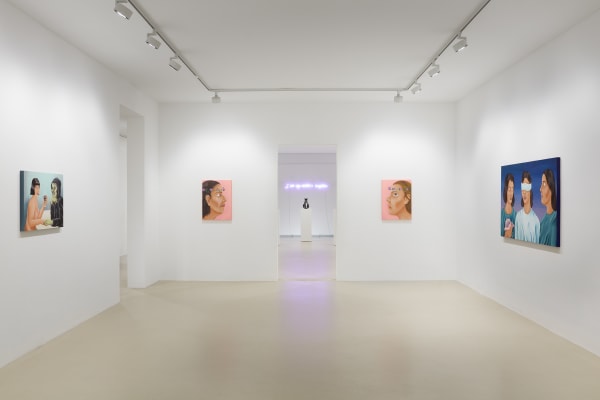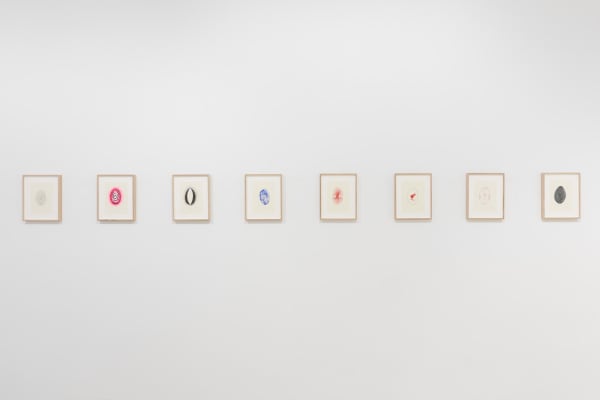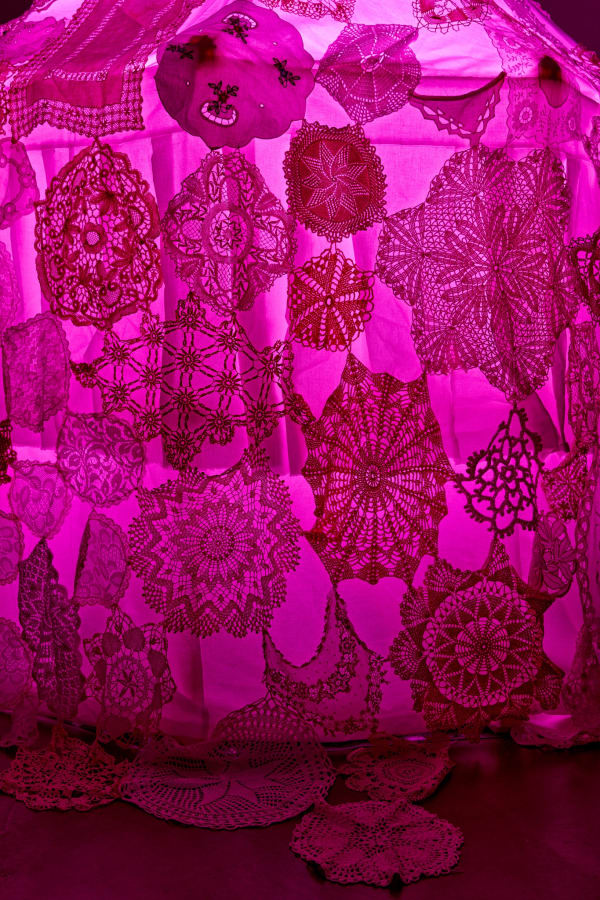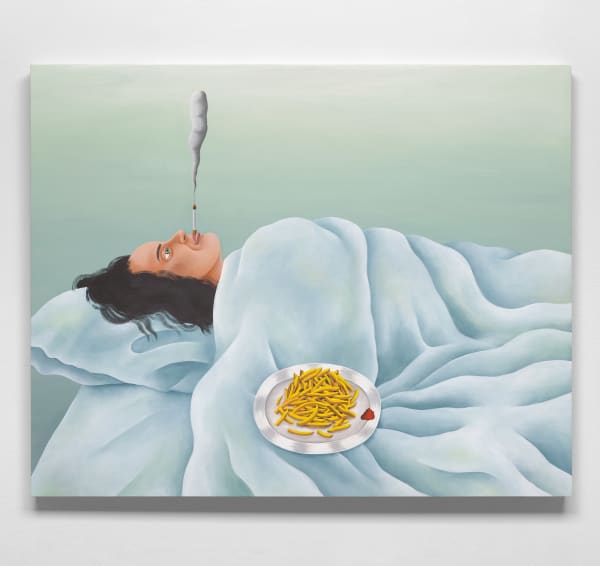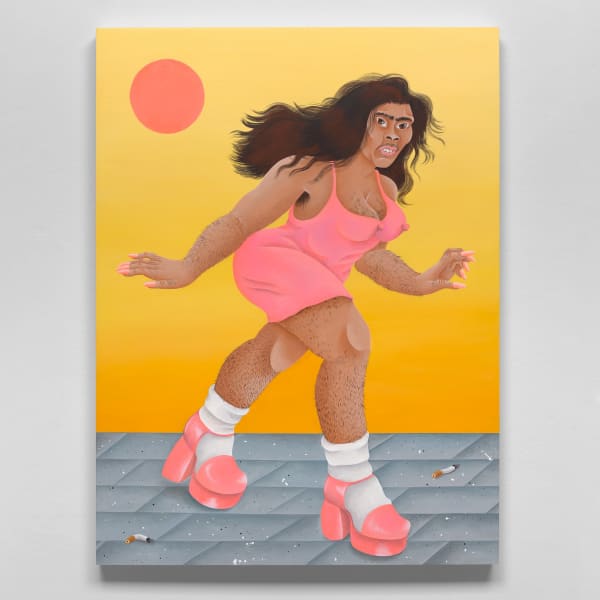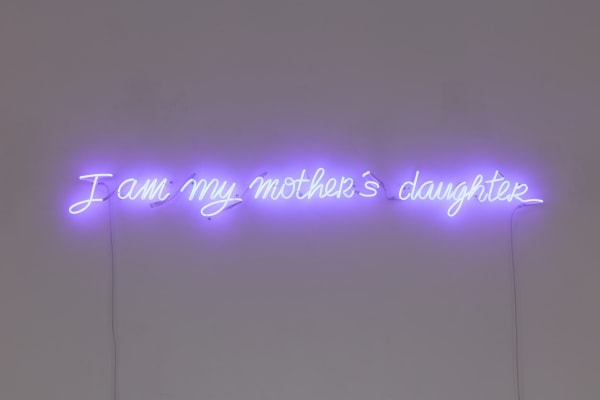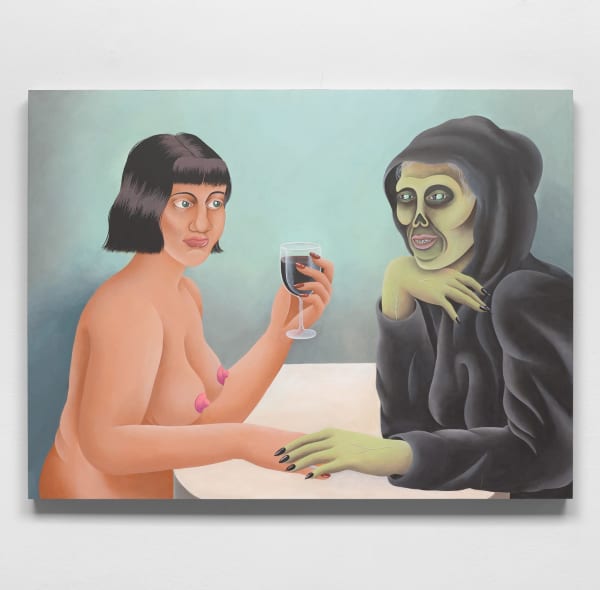joëlle dubois: forget me not
Past exhibition
Overview
KETELEER GALLERY is very pleased to present Forget Me Not, a solo exhibition by Joëlle Dubois (°1990. Ghent, BE). The artist’s first exhibition with the gallery consists of a completely new series of sculptures, paintings and an installation.
Press release
Forget me not… that universal plead of the vulnerable human being who cannot live without the other. And vulnerability is what it’s all about here. It already starts at birth, the necessity and expectation to be seen and heard by the mother. But also later in life, we never outgrow this need to be seen, acknowledged and remembered, no matter what we achieve and how independent we perceive ourselves to be. Loss represents one of man’s greatest fears, especially when deeply connected to another person. When confronted with her mother’s illness (who suffers from Alzheimer’s disease), Joëlle Dubois was faced with the ultimate feeling of powerlessness: forgetting and being forgotten. What remains of us when memory fades? What are we and what were we? This was the inspiration for Forget me not. It’s an ode to the primal mother and a way to process grief. “Forget me not” is an imperative, a request and a personal desire.*
We try to hold on to the memory, to what is inescapably impermanent, because in the face of losing the other and thus their reflective gaze, we lose a bit of ourselves.
Le désir de l’homme c’est le désir de l’Autre. (Lacan)
In her previous works, Dubois mainly dealt with the identity we construct in a society dominated by social media and with how we try to understand ourselves amidst the many reflections that come at us. Her newest works are about the identity that precedes this, the one we acquire through our family bonds, and about how the gaze, fears and desires of our mother, and of the mothers before her, determine ours. For Forget me not Dubois expanded her working methods. The neon installation I Am My Mother’s Daughter beautifully encapsulates this transgenerational transmission; how we are all a part of history’s legacy. The material execution is a direct reference to a personal memory from her childhood, her mother’s collection of neon lights, and an ode to her nonconformist, peculiar character.
In the basement we see Moon Cave, an installation accompanied by a soundscape by Joppe Tanghe in which we can hear Dubois’ mother talking about forgetting, the loneliness it brings about and her desire to continue experiencing the outside world. It’s an installation in which multiple storylines overlap. It’s a reference to a universal part of childhood; building fortresses as a personal safe universe to play in, not face the outside world just yet and let the imagination run wild. But the tent is also a symbol for her mother’s dementia, a much less hospitable place where one gets isolated involuntarily – filled with forget-me-nots as a wish to not be forgotten, glowing with pink neon light and hugged by Flemish lace doilies representing the traditional craft being passed down through generations. Furthermore, the tent also resembles a uterus. It’s a symbolic reconstruction of the physical bond between mother and child which is severed by birth in order to begin a new life cycle.
Completely new to Dubois’ oeuvre are the one-of-a-kind black and white ceramic vases standing in front of the neon lighting: three times Elixir of Life (hand thrown by Jolien Holvoet, painted by Joëlle Dubois). Modern versions of those ancient Greek vases which were uses to depict stories on as a memento for the future. The shape and drawings on these vases were inspired by Medieval alchemist drawings. Archaic, mythical-symbolic representations of the cycle of life which might not make any sense scientifically, but which do offer a great insight into the human psyche. What Dubois depicts here is not just life being passed on, but also the experience of life: the fears, traumas and attitudes towards reality that seep through the different generations, both by upbringing and by epigenetics. A gift, but also a weight of which you sometimes need to free yourself in order to move forward. It is also, however, an attempt to preserve her mother’s youth and health.
For this exhibition Dubois also made some slightly more abstract works: a series of egg drawings. 35 different variations of the egg that were created in one sitting when she took a micro dose of mushrooms. The egg is a recurrent element throughout the exhibition and a symbol for birth and femininity.
In Bed Habits, an homage to both Annette Lemieux’s Bad Habits (2015) and Philip Gustons Painting, Smoking, Eating (1972), we see Dubois’ mother in bed, smoking, with a plate of fries next to her. It’s a symbolic reference to her rebellious habits before she got sick. A visual ode to the reality as she lived and experienced it, the expressions of a very particular free will, the trace only she could make… the amalgamation we call a human life which can never truly be captured, only admired, in silent awe. As Dubois puts it: she wants to address a harsh reality here: no matter what kind of life you live, sickness can happen to us all.
In Looking at Her and Looking at Me an unbridgeable gap floats between the two gazing figures. Both mother and daughter, connected by a wreath of flowers (a symbol for their genetic heritance) and thinking of each other, are somehow trapped in their own point of view. With this diptych, Dubois wants to make clear that the roles have been reversed. The mother’s gaze is directed at the daughter who directs her gaze outwards, to the viewers. The meaningful communication hiding in the direction of the women’s gazes carries a vibration of sadness and despair, but at the same time one of unity. The silent agreement seems to be that it is now the daughter’s task to acknowledge and build on the mother’s wisdom.*
Not only family members and loved ones shape who we are, culture does so too. That’s why Dubois eagerly goes out to explore what (art) history can teach her. In addition to the previously mentioned artists, Woman in Blue was directly inspired by Tamara de Lempicka’s Woman in Red (1927), a symbol for women’s emancipation, and Milo (the dog she takes care of now that her mother no longer can) was inspired by Fernando Botero’s dog portraits.
Let Me Finish My Drink First is an homage to Nicole Eisenman’s Death and the Maiden (2009) and reminds us of our own daily battle with death. Living is learning how to die… It’s about the paradox of simultaneously trying to forget and remember that we are mortal, but also about enjoying what we have. It’s about learning to find a sense of freedom in living with the certainty of death which, as in Death for Breakfast, announces itself mercilessly at the very crack of dawn and with the beginning of every new life.
The exhibition could be seen as one big memento mori. A reminder of transience, of the shadow that makes light possible. What distinguishes these works from the well-known vanitas paintings however, is that Dubois reaches very deep inwards, puts the emphasis on human connection and uses very personal experiences to strike a universally human chord.
Lauren Wiggers, 2022.
* Elisa Mosch, 2022.
* Elisa Mosch, 2022.
Installation Views
Works
-
 Joëlle Dubois, Bed Habits (Hommage to Annette Lemieux and Philip Guston), 2022
Joëlle Dubois, Bed Habits (Hommage to Annette Lemieux and Philip Guston), 2022 -
 Joëlle Dubois, Death for Breakfast, 2022
Joëlle Dubois, Death for Breakfast, 2022 -
 Joëlle Dubois, Elixir of Life, 2022
Joëlle Dubois, Elixir of Life, 2022 -
 Joëlle Dubois, Elixir of Life, 2022
Joëlle Dubois, Elixir of Life, 2022
-
 Joëlle Dubois, Elixir of Life, 2022
Joëlle Dubois, Elixir of Life, 2022 -
 Joëlle Dubois, Forget Me Not, 2022
Joëlle Dubois, Forget Me Not, 2022 -
 Joëlle Dubois, Her name is Lucy, 2022
Joëlle Dubois, Her name is Lucy, 2022 -
 Joëlle Dubois, I am My Mother's Daughter, 2022
Joëlle Dubois, I am My Mother's Daughter, 2022
-
 Joëlle Dubois, Let me finish my drink first (Homage to Nicole Eisenman), 2022
Joëlle Dubois, Let me finish my drink first (Homage to Nicole Eisenman), 2022 -
 Joëlle Dubois, Looking at Me, 2022
Joëlle Dubois, Looking at Me, 2022 -
 Joëlle Dubois, Looking at You, 2022
Joëlle Dubois, Looking at You, 2022 -
 Joëlle Dubois, Milo, 2022
Joëlle Dubois, Milo, 2022











